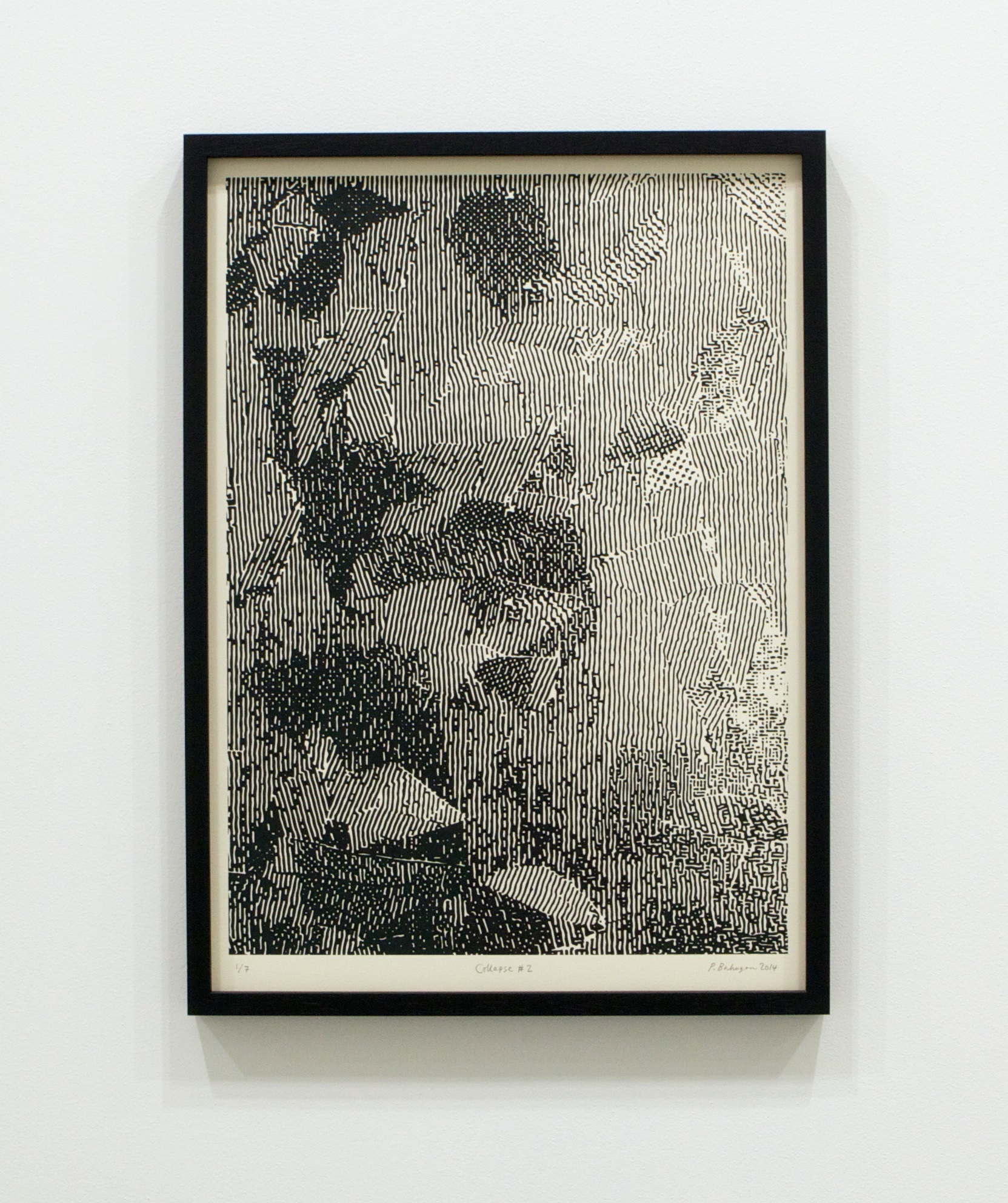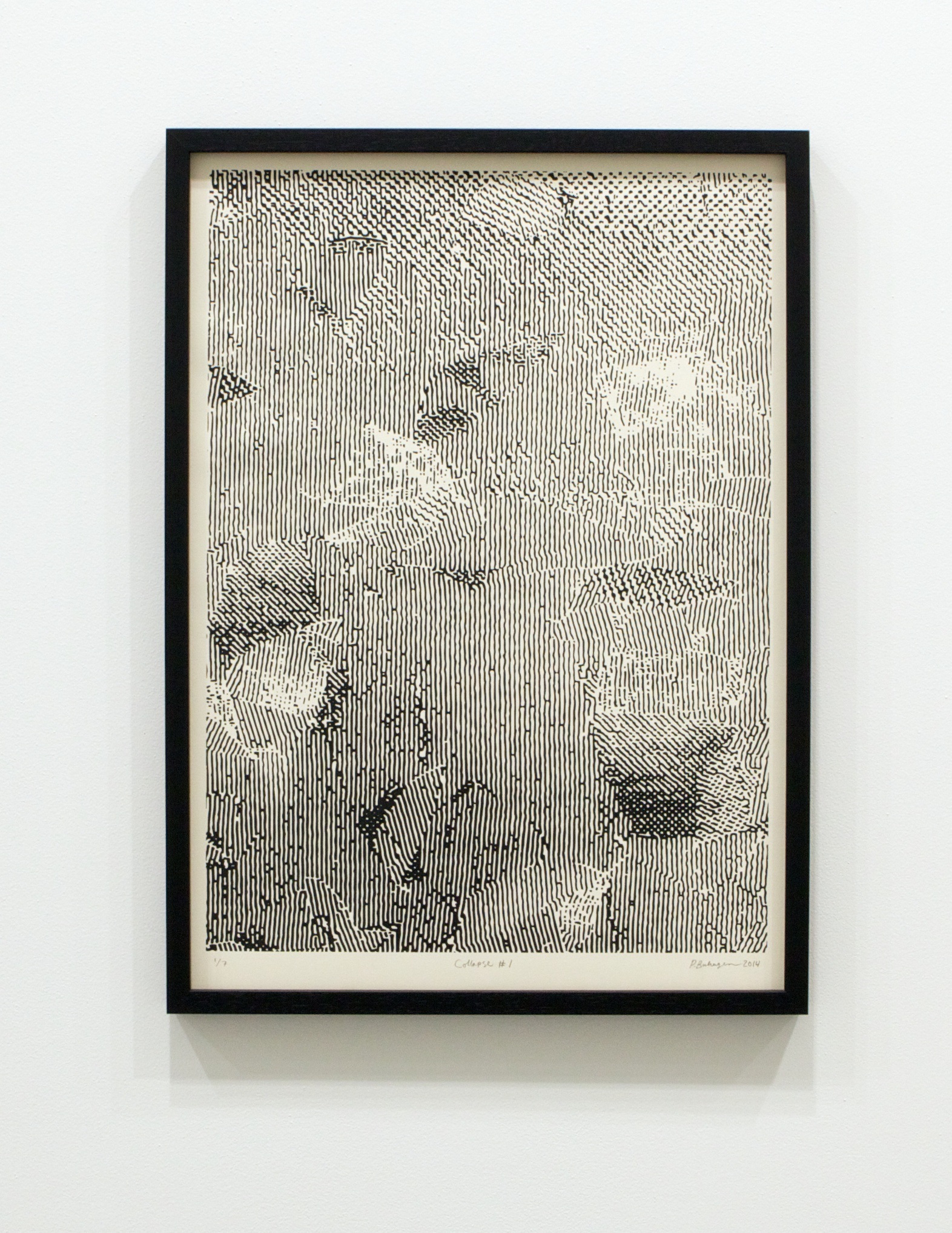


PETTER BUHAGEN
Born 1983, Trondheim. Lives and works in Oslo.
Abstract art has often been understood as a form of withdrawal. Also today, abstraction can be read as a strategy for withdrawing from our hectic, fragmented, and digitally-infused everyday life. This attitude characterizes Petter Buhagen’s artistic practice. He deliberately explores abstraction as a filter for the flood of information from the media-infested, digitized world. His obser-vations and inquiries into this state of affairs form the starting point for his abstract pictures, but oftentimes only their titles, forms and formats hint at their conceptual impetus. The works in the series Loop (2014) look initially like pure, expres-sionistic and abstract paintings; only through the formats (like iPhone screens) and colour palette (derived from the logos of Facebook, Instagram, Twitter and other digital platforms) do they refer to their origin in social media. By using digital platforms as artistic resource material, yet stripping them down to their physical formats and colours, an enormous amount of content and information is distilled to its most basic expression: form and colour. Instead of paint on canvas, Buhagen has made the almost watercolour-like marks with print toner. Using the digital pictorial world as the conceptual starting point therefore has a consequence in the material manifestation, through the use of precisely that which is necessary for mater-ializing the immaterial digital information, namely, print toner. The toner stands out as pure, dissolved materiality. For Buhagen, it is important that the new images he brings into our image-ridden world appear as non-confrontational, poetic abstractions.
In the exhibition NN-A NN-A NN-A, Buhagen is represented with the video work Generations and the series Collapse 1-5. Generations deals with the photocopy machine’s interpretation and mediation of information, more precisely, with the information that is lost in the copying process. To make the work, Buhagen first took a photocopy with the machine’s lid open and with nothing on the glass plate – a copy of nothing. The result: a completely black print. This sheet was then run through the machine and that result – the next photocopy – was copied in the same way. He repeated the procedure until the machine eventually spit out a completely white print. Each time a copy is made, a gradual loss of information occurs. He scanned in all the physical copies and combined them into a video presenting the process in a video loop. The 37-second video shows the transformation of the black picture to a white picture. It is projected on the wall as a kinetic, abstract painting. The first and last images lead our thoughts to some of modern art’s most formative works – the black and the white monochromes – and thus function as a reference to abstract art’s origin. By presenting Generations as a video, Buhagen draws the abstraction away from its relation to any object and inserts it into modern, immaterial technology.
The five pictures in the series Collapse are also based on a photocopy-machine process, but in combination with physical photographs. After selecting excerpts of the photos, Buhagen rendered them as total abstractions: he super-imposed them repeatedly in the photocopy-machine process, to the point where the original motif dissolved and was reconfigured. Thus the initially specific image became completely abstracted through an irreversible process of encryption. It is impossible to re-trace or recreate the original information. Through the resolute misuse of the photocopier’s reproductive potential, Buhagen’s abstraction appears both as a deliberate form of destruction and a place of refuge.
Text by: Therese Möllenhoff

